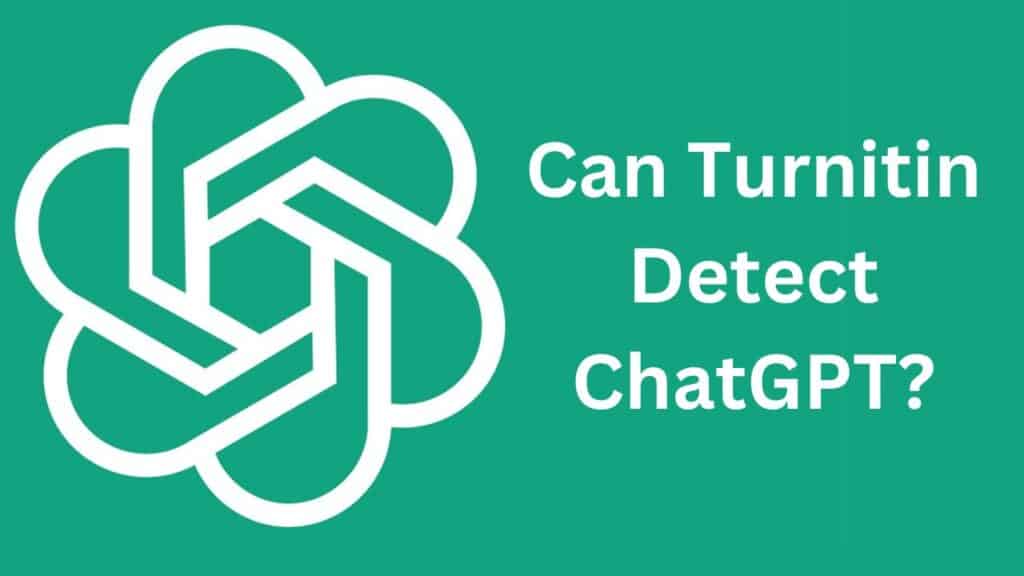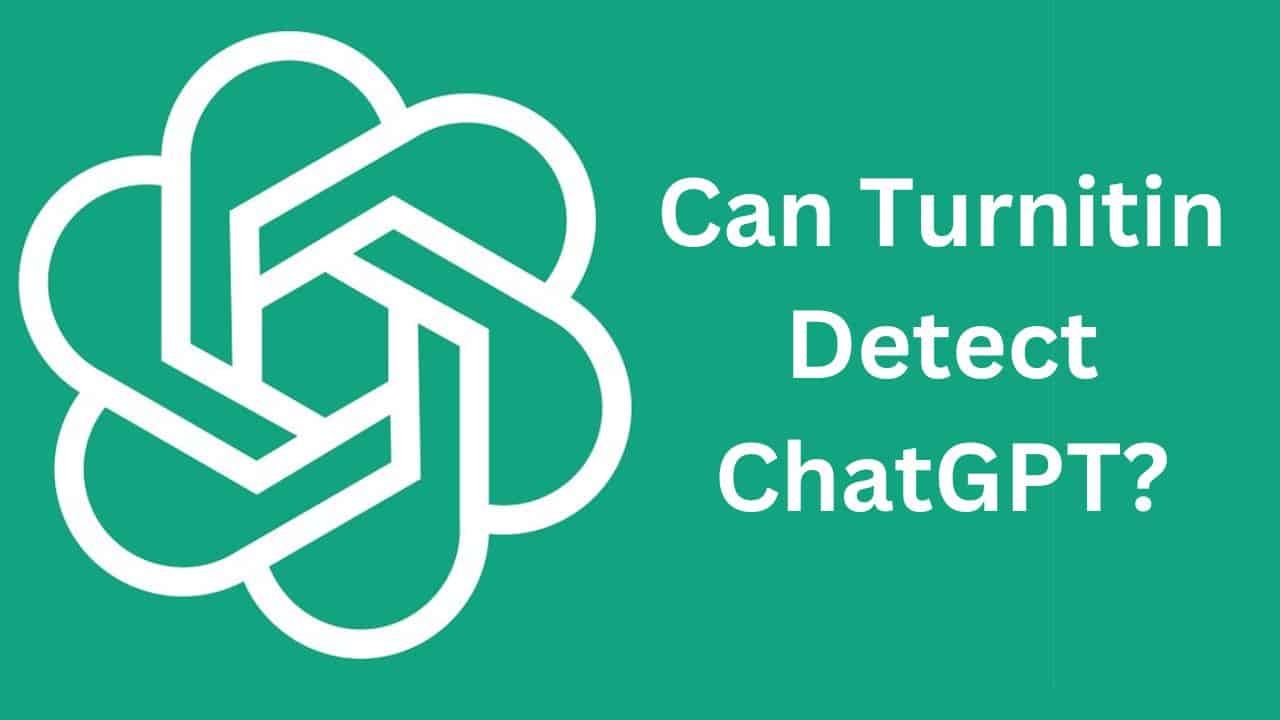Yes, Turnitin can detect Chat GPT content with 98% accuracy. Turnitin technology is capable of detecting AI-generated and AI-assisted content. This ensures academic integrity and promotes original work in an era of advancing AI technologies.
Turnitin, an effective plagiarism-detection tool, has quickly responded to the increasing worries in the world of education that AI writing tools like ChatGPT could replace critical thinking. Fortunately, Turnitin is now able to detect whether content is generated by artificial intelligence, so the question arises: Can it detect ChatGPT?
Does Turnitin Detect Chat GPT?
Yes, Turnitin has technology that can detect ChatGPT content. Turnitin is a plagiarism checker that can properly analyze content to ensure the originality of the work submitted.
Universities and educators can now easily check students’ work and the originality of the content by using chat gpt detector. Turnitin’s ChatGPT Screening can inspect all the content written through an AI chatbot.
The groundbreaking plagiarism checker will be able to detect content’s originality from scratch. Apart from identifying AI written content, Turnitin also provides a report identifying the occurrence of plagiarism.
Schools and universities will highly benefit from Turnitin, as nowadays, students use AI chatbots to complete their assignments and college essays, eliminating the originality, authenticity, and true intention of assignments.
Quick Facts
- Yes, Turnitin’s detection runs deeper than just ChatGPT. While they do not specify, other AI text-generating tools are detectable under the latest upgrades for the service.
- It provides a Similarity index and originality report to support its identification.
- Educators and lecturers can use this AI writing detector to check students’ work.

How Does Turnitin Detect Chatgpt?
Using their AI writing detection model, Turnitin can Detect content produced by AI language models, including Chatgpt GPT-3 and GPT-3.5 versions. Turnitin’s detector can also identify content from GPT-4, also called ChatGPT Plus, because GPT-4’s writing characteristics match earlier model versions.
Turnitin’s content detection process begins by segmenting a submitted paper into sections of several hundred words, roughly equivalent to five to ten sentences. To understand each sentence within its context, these segments are overlapped.
Each text segment is subsequently evaluated using Turnitin’s AI detection model, assigning each sentence a score between 0 and 1.
A score of 0 indicates that the model believes the sentence is human-written, while a score of 1 indicates an AI likely generated the sentence.
By calculating the average scores across the entire document, the model estimates the percentage of text it believes was AI-generated.
The underlying logic of this detection mechanism revolves around the word sequence probabilities. GPT-3 and ChatGPT, trained on vast amounts of internet text, generate word sequences based on the next most probable word.
This often results in consistent and highly predictable word sequences. In contrast, human writers exhibit more randomness and unpredictability in their word choices. Turnitin’s classifiers are fine-tuned to recognize these disparities in word sequence probabilities, making them proficient in distinguishing between AI and human writing patterns.
It’s essential to note that Turnitin’s AI writing detection technology is distinct from its Authorship (Originality) system. The AI writing detection model calculates the probable percentage of AI-generated content in a submission.
While the Authorship system employs metadata and forensic language analysis to determine if a piece was penned by someone other than the presumed author, however, it doesn’t specify if the content was AI-generated, but merely that it isn’t the submitting student’s original work.
Can Universities detect ChatGPT?
Yes, it is now possible for professors, teachers, colleges, or universities to detect chatgpt or other AI content generator content using various tools such as Turnitin.
How does Turnitin work?
Once students submit the assignment, Turnitin will examine and analyze the entire submitted work. This plagiarism tool will identify each and every sentence and match it with other sources to detect the originality of the content within a few minutes.
The working staff can view submitted work, and it also allows lecturers to do online work and include comments and grades, which are returned to the respective students once all the papers are checked and marked.
There are two things provided by Turnitin each for submitted work:
Similarity Index: Turnitin’s software takes the content submitted and compares it with a wide range of content databases, including academic, internet, and student paper content. Then Turnitin starts looking for similarities and reports them with a percentage. This includes the percentage of matched or plagiarized content analyzed by Turnitin with other sources.
The similarity index will properly indicate matched content in the submitted paper. Students and educators then check what sentences or phrases match and what changes must be made to avoid further similarity issues.
Originality Report: It will provide a complete report of matched content in extra detail, including Turnitin’s sources. It can include articles, blogs, websites, books, and more previously submitted.
With Turnitin software available, it will be easier for universities and professors to detect AI-written content within a few minutes. Now, students can work on preparing original assignments and essays rather than asking chatbots to generate content and solve queries for them.
Turnitin ChatGPT Screening
The availability of AI chatbots like ChatGPT has made it easier for students to generate content within a few seconds. Users can request essays, articles, blogs, etc., and ChatGPT will generate them in a human-like tone.
Many students use ChatGPT for their assignments, homework, and college essays. This has led to many serious issues, such as copying and inauthentic content, which removes the purpose of universities and colleges giving assignments and homework.
AI chatbots’ ability to produce content and responses in a human tone has made it difficult for schools and universities to distinguish between AI-written and human-written content. To avoid this issue, AI content detectors like Turnitin were introduced. Turnitin ChatGPT Screening can identify and analyze the originality of the content provided. It can analyze and detect content from scratch.
Why Is This Significant?
AI detection tools like Turnitin are significant in ensuring students do not use AI chatbots to complete their assignments, essays, and homework. Using AI chatbots like ChatGPT to complete the entire paper on the student’s behalf is unethical and can be considered entirely plagiarized. Students need to understand that AI chatbots can’t be used as a replacement to complete the academic work assigned to them to help enhance their skills, knowledge, and critical thinking.
How Can Instructors Detect the Use of Chat GPT?
Apart from using AI-detecting tools like Turnitin, instructors can detect the usage of ChatGPT in students’ work by analyzing the style, tone, and language used in the writing. ChatGPT or any other AI chatbot tends to use a particular style.
Additionally, chatbots also tend to use certain words or phrases that students usually do not use, which can help instructors detect the original writer behind the assignment submitted. Instructors can even ask students to explain the ideas or concepts of their assignment in their own words to identify whether the student has understood the work.
Can teachers tell if you use ChatGPT?
AI-detecting tools can help teachers determine whether your submitted content was human-written or AI-generated. ChatGPT utilizes an AI engine that combines the GPT-3.5 language model and AI-detecting tools like Turnitin and compares your submitted content with a wide range of databases, articles, blogs, and more.
Besides this, AI chatbots contain a specific language, tone, and style that stands out and distinguishes them from human writing. This helps the teacher tell if you are using a ChatGPT or not.
The Ethical Implications of Using Chat GPT
Using ChatGPT for school assignments, homework, and papers can be helpful for students as it reduces their workload. However, using AI chatbots is extremely unethical as the AI system is completing the work assigned to the students for their knowledge, skills, and growth.
Nowadays, students are using ChatGPT for the completion of their assignments, university essays, papers, and more. This can be considered a form of cheating and can make shortcuts in writing or even display inaccurate information, which can later cause trouble for the students. Therefore, students need to understand these ethical implications before utilizing ChatGPT.
FAQ’s
What does Turnitin not detect?
Turnitin doesn’t detect Plagiarism. Instead, Turnitin provides a similarity report in which the software takes in the student’s submitted work and compares it with the database of the content, including various student paper content, internet, academic, and more, and looks for similarity percentages, not plagiarism.
What gets flagged on Turnitin?
Algorithms of Turnitin AI detecting systems identify the document thoroughly and if they witness any inconsistency in the document that sets it apart from a regular submission or catch something strange, Turnitin will flag it for you to review.
What can I exclude from Turnitin?
In Turnitin, you can exclude any bibliography or any area within the document that contains content or quotes that the author has used.
Can you outsmart Turnitin?
You can outsmart Turnitin by rewriting the ChatGPT-generated content in your words, changing the sentence structure, using synonyms, using a personal story or examples in the content, and more. This will help make your content authentic and outsmart AI-detecting tools like Turnitin.
How do you avoid similarities on Turnitin?
To avoid similarity on Turnitin, you must cite your sources and references, use quotations, avoid too many quotes, rewrite sentences in your own words, and avoid copying word to word from other sources.
What percentage is unacceptable in Turnitin?
A similarity percentage of more than 25% is unacceptable in Turnitin. A score below 25% is acceptable and is marked green, indicating the paper is original and not more than three words verbatim, making your submission original. However, a more than 25% score leads Turnitin to flag your submitted content.
Conclusion
So, to answer the question, “Can Turnitin detect Chat GPT?” – yes, it can. Turnitin’s ability to detect Chat GPT-generated content helps maintain academic integrity in the face of emerging AI technologies. By effectively identifying AI-written content, educators can ensure students create original work and uphold high standards in their assignments. As technology advances, it remains crucial for educational institutions and plagiarism detection tools to adapt and address new challenges.
